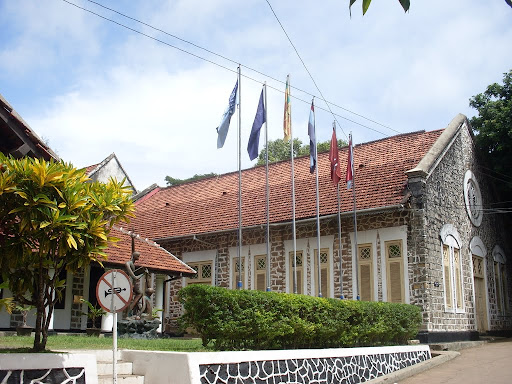FROM A FERTILE REGION TO A TORRID WASTELAND

The incredible story of the “Green Sahara”
More than 2000 years ago, Herodotus (484-425 B. C.), the ancient Greek historian, described the Sahara as a region of sand and heat, with high dunes and salty hillocks, and vast waterless areas. He said that it was inhabited by people with strange and exotic customs. But it was not always like this. The Sahara was once a green and fertile country. What transformed this region of lush vegetation into an arid desert? What caused the rainfall to stop abruptly, bringing about a drastic climatic change? Will the Sahara green up again?
The Sahara, meaning “desert” in Arabic, covers an area of 9,200,000 km² and it is the largest hot desert in the world. The desert comprises much of North Africa. To the south, it is bounded by a belt of semi-arid and tropical savanna around the Niger River valley and the Sudan region of Sub-Saharan Africa.
Few know that this vast Sahara desert was not always a horrid wasteland with sand dunes where people and animals die of thirst. Centuries ago, the Sahara was a pleasant fertile land where rainfall was a common feature and where trees and grass grew and streams flowed abundantly. Many wild animals had made it their habitat while art and culture too were very impressive.
The Negroid people, who lived there, hunted a large variety of land and water animals as geological and archaeological factors corroborate this fact. The number of rock paintings and engravings in the Sahara, left behind by early Holocene artists of the current geological period, is much higher than those found anywhere in the world. For instance, the cave paintings, discovered at Tassili N’Ajjer in Southern Algeria, highlight this bewildering truth. It is a UNESCO World Heritage Site having one of the most important groupings of prehistoric cave art in the world and covering an area of more than 72,000 km².
How this green fertile land became one of perfect death as it is today has always puzzled scientists. They now attribute the change to monsoon rains. Northern Africa, according to their latest research, was wetter between 15,000 and 11,000 years ago and this ended around 5000 years ago. Geologists and modern climate scientists call this span of time the African Humid Period (AHP), also known as the “Green Sahara”. The area of the present-day Sahara was covered with lush vegetation, stretching right up to the Arabian Peninsula. The main factor behind this humid period with heavy monsoon rains, in fact, is planetary in scale: cyclical changes to both the tilt and orbit of our planet Earth, resulting in about 4%-8% more solar energy hitting the planet than it gets today. Solar radiation is always changing due to natural orbital cycles. This warmed up the northern hemisphere, causing powerful winds to move towards it, shifting up the monsoons which drench South Africa today, thus pouring water onto the Sahara and allowing the vegetation to grow there. Dust records indicate that there was a dramatic decrease in moisture around 5500 years ago when a slight wobbling once more of the Earth’s orbit caused a decrease in the solar energy. At this point the AHP ended quickly and the Sahara returned to a sandy desert as it is now and people clustered back around the Nile and other water resources for their existence, founding the great pharaonic civilisation. Meanwhile, some geologists have even hypothesised that 230 green Sahara periods may have occurred in the past eight million years.
The orbital shifting and the resulting climatic changes were not the sole factor that has led to this depraved condition of the Sahara. Human beings too have had their part in these climate changes. The increasing number of domestic animals destroyed plant life while mountainous woodlands were burnt off and reduced to grazing land. Vegetation, gradually, deteriorated: from savanna it became steppe and from steppe it became desert. The only remnants left were paintings and artefacts that boast of the past glory and legacy of this once hospitable land of luxuriant foliage and moist environment. In Algeria and Libya, scholars have found astounding evidence of earlier human occupation. Along the waterways that are nothing but sand today, vestiges of fireplaces, grinding stones, hunting tools and even mounds of fish bones have been found. In 2000, a team of archaeologists hunting for dinosaur bones stumbled upon a graveyard in Niger: traces of a community who had lived in the Green Sahara. Languages of Mali in Western Africa and Ethiopia in Eastern Africa are very different from each other, but strangely they still have similar words for “hippo”. Some linguists claim that this could bear abundant evidence of the fact that people from these cultures, though separated by a vast distance today, once lived in the same place among these semi-aquatic African mammals.
Early explorers of the Sahara
The first adventurers were English explorer Dixon Denham (1786-1828), Scottish explorers Bain Hugh Clapperton (1788-1827), Walter Qudney (1790-1824) and Major Alexander Gordon Laing (1794-1826). Laing became the first European to cross the Sahara and reach the fabled city of Timbuktu in Mali, a landlocked country in West Africa. Although he was murdered there, the French explorer René Caillié (1799-1838), who came there, disguised as an Arab, succeeded in leaving the place unscathed. He reached Morocco after facing torrid heat, whirlwinds and scarcity of water and often lured by the torment of the mirage.
Caillié’s journey through the Sahara was a remarkable feat as it paved the way for further regular encroaching journeys of the French. Frenchmen soon embarked upon colonial activities, military campaigns and building of the Trans-Saharan Railway through Algeria to Sub-Saharan Africa to the south, intended originally to connect coal mines and boost trade throughout North Africa. For their excursions they had to produce the definite maps of the area that revealed the true picture of the Sahara with high mountains, dotted with olives and cypresses. These maps were prepared by the German explorer Heinrich Barth (1821-1865). His findings sowed the seeds for archaeological research that proved that the Sahara period was divided into two pre-camel and post-camel periods: a finding supported by French geologist G. B. M. Flamand who did a comparative study of the cave engravings of Southern Oran in Algeria.
By 1956 the scientific interest in the Sahara had grown and numerous French expeditions were sent to Tassili N’Ajjer. The earliest paintings were found to be produced by a Negroid ethnic group, but other primitive artefacts, found at various places, showed that this region may have been inhabited from the very dawn of man’s existence.
Besides the art, research equally unmasked the political history of the Sahara desert: the continuous struggle between the tribes. The semi-nomadic Tuareg people, who practise Islam and belong to the Berber branch of the Afroasiatic family, are the predominant ethnic group that inhabits the region. The frequent warfare diminished the population and the kingdoms disintegrated. The severe droughts may have been the cause of such warfare. In 1913, a terrible famine struck the region and over one million people perished of hunger, disease, murder and fratricide. In 1972-74 the disaster hit the Sahara again: famine and influenza epidemic aggravating the horror of the region. Hunger made people commit the most dreadful acts: murder, looting and killing one’s own children. Despite such natural disasters, the Sahara continues to exist and people are still inhabiting the area.
Ecological link between the Sahara desert and the Amazon rainforest
The Sahara desert in Africa and the Amazon rainforest in South America are so different and far apart from each other, but surprisingly, both share a vital ecological link. A new geophysical research proves that without the more than a hundred million tons of dust that blows in the wind across the Atlantic Ocean from the Sahara desert, the Amazon rainforest, the largest on earth, would cease to exist. The research paper says that this dust from Africa contains the vital source of plant nutrient: phosphorus. It is a tiny 1/10th of 1% of the Sahara dust but in total 22,000 tons of it fall upon the Amazon annually. This amount of the nutrient is equal to what the constant rainforest rains wash away each year. What an astonishing and perfect balance of nature!
A large part of the African dust blows from the Bodélé Depression in Chad in north central Africa. The 500 km long, 150 km wide and around 160 m deep depression is an ancient lake bed containing huge deposits of dead microorganisms loaded with phosphorus. Ocean pastures of the Atlantic and Amazonian soils, in turn, are short of this important chemical element. Thus, the entire Amazon ecosystem depends on the fertile Saharan dust to replenish the loss of a vital plant nutrient caused by rains. ***







